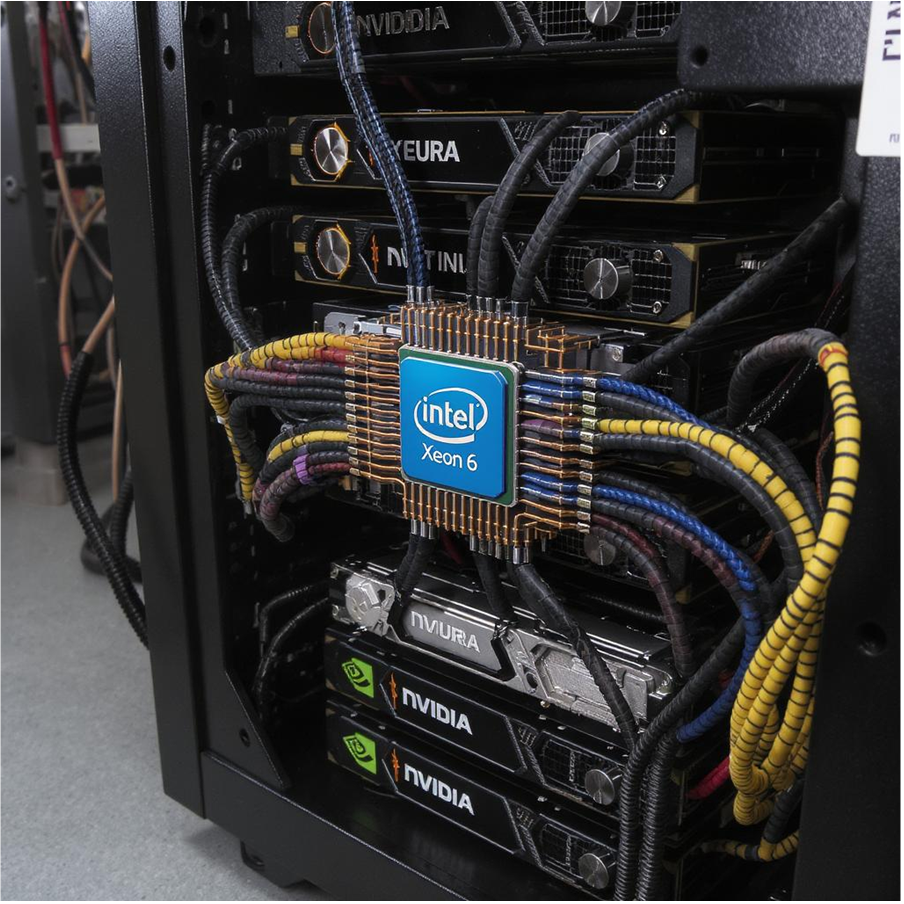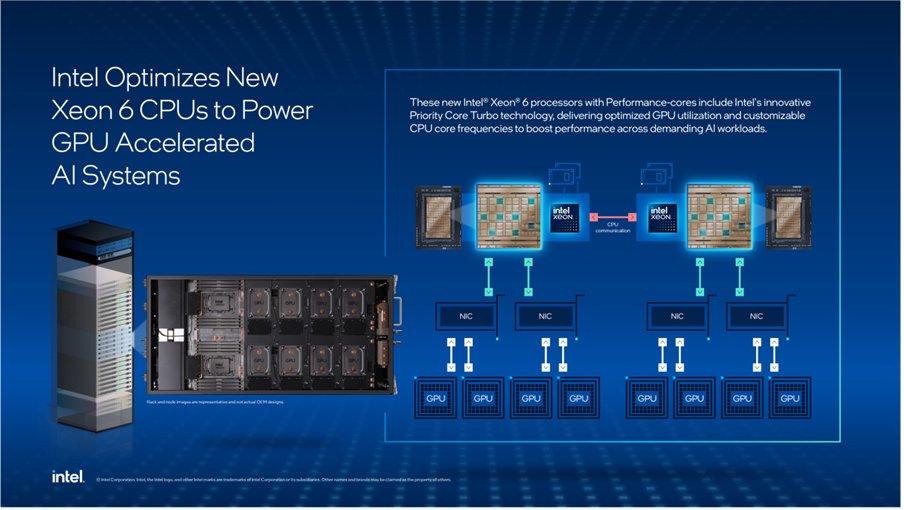New additions to Intel Xeon 6 series incorporate Intel’s Priority Core Turbo technology and Speed Select Technology – Turbo Frequency for AI workloads. These P-core processors dynamically prioritize high-priority cores to run at higher frequencies, while lower-priority cores operate at base frequency, optimizing GPU performance. The Xeon 6776P currently powers Nvidia’s DGX B300 AI systems, providing substantial memory capacity and bandwidth to support demanding AI models and datasets across industries.
Intel’s new Xeon 6 processors feature Priority Core Turbo technology that improve AI workloads and are included in Nvidia’s latest DGX B300 AI systems.

Intel recently introduced three new additions to its Intel Xeon 6 series of CPUs, designed to manage advanced GPU-powered AI systems. These new processors with Performance cores (P-cores) incorporate Intel’s Priority Core Turbo (PCT) technology and Intel Speed Select Technology – Turbo Frequency (SST-TF), delivering adaptable CPU core frequencies to improve GPU performance across demanding AI workloads.
Intel says the new Xeon 6 processors are available now, with one of the three currently serving as the host CPU for the Nvidia DGX B300, the company’s current generation of AI-accelerated systems. The Nvidia DGX B300 integrates the Intel Xeon 6776P processor, which plays a key role in managing, orchestrating, and supporting the AI-accelerated system. With substantial memory capacity and bandwidth, the Xeon 6776P supports the increasing needs of AI models and datasets.

“These new Xeon SKUs demonstrate the notable performance of Intel Xeon 6, making it a suitable CPU for next-generation GPU-accelerated AI systems,” said Karin Eibschitz Segal, corporate vice president and interim general manager of the Data Center Group at Intel. “We’re pleased to strengthen our collaboration with Nvidia to deliver one of the industry’s high-performing AI systems, helping accelerate AI adoption across industries.”
Intel claims the introduction of PCT, combined with Intel SST-TF, represents a considerable step forward in AI system performance. PCT allows for dynamic prioritization of high-priority cores, enabling them to operate at higher turbo frequencies. Simultaneously, lower-priority cores operate at base frequency, ensuring effective distribution of CPU resources. This capability is important for AI workloads that require sequential or serial processing, feeding GPUs faster and improving overall system efficiency.
More broadly, Intel Xeon 6 processors with P-cores deliver significant features for any AI system, including:
• High core counts and notable single-threaded performance: With up to 128 P-cores per CPU, these processors ensure balanced workload distribution for intensive AI tasks.
• Memory speeds with a 30% increase: When compared to competitors, Intel Xeon 6 offers improved memory performance at high-capacity configurations and supports advanced memory bandwidth with MRDIMMs and Compute Express Link.
• Enhanced I/O performance: With up to 20% more PCIe lanes than prior Xeon processors, these CPUs enable faster data transfer for I/O-intensive workloads.
• Reliability and serviceability: These processors are built for consistent uptime with robust reliability, availability, and serviceability features that minimize business disruptions.
• Intel Advanced Matrix Extensions: These CPUs support FP16 precision arithmetic, enabling efficient data preprocessing and key CPU tasks in AI workloads.
As enterprises modernize their infrastructure to handle the growing demands of AI, Intel Xeon 6 processors with P-cores provide a valuable combination of performance and energy efficiency. These processors support a wide range of data center and network applications, reinforcing Intel’s position as a provider of AI-optimized CPU solutions.
LIKE WHAT YOU’RE READING? INTRODUCE US TO YOUR FRIENDS AND COLLEAGUES.